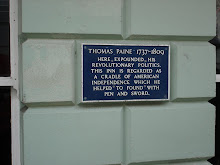
The pensive looking chap looking into the engine compartment is my 'beau frere'. He has just acquired this extremely purposeful 1929 Frazer Nash Super Sports. To be honest it rather suits his devil-may-care attitude and he will soon be terrorising the roads of East Sussex with it. For those of you who are interested in such matters, despite the car's relatively late date, it is driven by chains - several of them, in what is a theoretically highly efficient method of transmission. However, these chains break every so often necessitating much struggling at the roadside with the oily objects, re-connecting them, shortening them or throwing the worn out ones over the nearest hedge. The Frazer Nash has a marque following with an entusiasm bordering on the clinically insane. Huge journeys are undertaken in them, and due to their favourable power to weight ratio and fast acting transmissions they often win vintage races against much more esoteric machinery. Personally I like the unpolished Brillo-padded aluminium finish and the general touch of the smithy that characterises many of its fittings. As you can see it won't be long before it requires new tyres which, driven in the manner intended have a half-life of about 25 miles. Behind the wheel there are several items to amuse the conductor such as an object which looks like the handle from a garden syringe - this you pump furiously in order to build up enough pressure in the fuel tank to propel the motor spirit from tank to engine. The dinner plate size revolution counter would look more at home in the treadmill room of a Victorian house of correction and the other gauges, such as they are, have an air of The Great western Railway about them. All in all this is my type of car. Quite fast enough to frighten yourself, yet not so hot rod that it doesn't draw admiring looks from tweed-capped old gentlemen who nod sagely and talk animatedly of the late 1930's and tales of how you 'could buy a good one for fifteen quid in those days', etc., etc. It's nice to see this old iron being used for as long as possible before the powers that be declare how dangerous and antisocial it all is and that we should jack them all in for 2000 quid each and buy electric cars instead.



